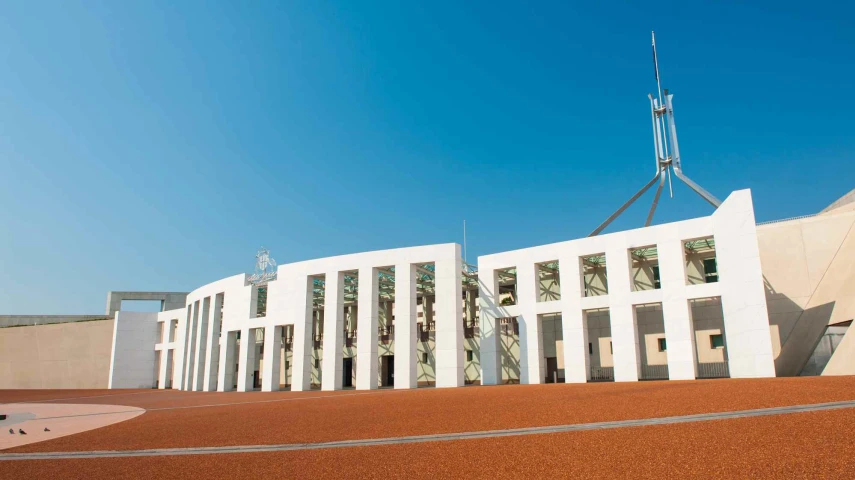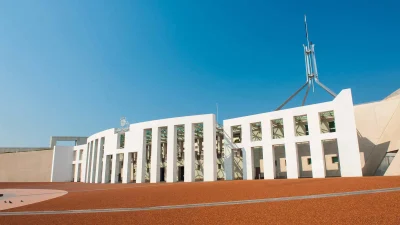Budget 2023: much-needed or a missed opportunity?



While many welcomed Treasurer Jim Chalmers’ second budget with its $14.6 billion cost-of-living plan, some industry professionals are concerned with what was left out.
On 9 May, the federal budget for 2023–24 was handed down. Inflationary pressures, increasing mortgages and rising energy costs were at the forefront of the announcement.
Chalmers additionally forecast a $4.2 billion surplus in 2022–23, the first in 15 years.
The budget measures included the previously announced superannuation tax rate changes, which would see a 30 per cent headline tax rate for members with over $3 million in their super fund.
Another prominent announcement was towards sustainable finance, including $1.6 million to co-fund with the private sector the development of an Australian sustainable finance taxonomy; $8.3 million over four years to develop and issue sovereign green bonds; and $4.3 million to bolster ASIC’s enforcement action against greenwashing.
Moreover, the Treasurer announced a $14.6 billion cost-of-living plan to assist Australians with reduced power bills, health costs, housing and increased wages.
Cost-of-living and inflation
Andrew Yates, chief executive at KPMG, felt the budget achieved a “reasonable balance” between helping Australians and preventing further inflation.
“This budget presents an improved picture for government finances compared to the 2022–23 October budget. The challenge for the government has been finding measures to alleviate the cost-of-living pressure without further stoking inflation,” he said.
“Overall, this budget is a measured and balanced response to the challenge of supporting households in an environment of relatively high inflation and government debt.”
Andrew Lowe, head of technical services at Challenger, echoed the chief executive’s thoughts with a balanced perspective on the proposed measures.
“The budget contains a range of measures intended to deliver much needed and targeted cost-of-living relief, balanced with an intent to alleviate inflationary pressures which are being felt by so many Australians, including both pre- and post-retirees,” he commented.
The government’s net debt was expected to grow to $703 billion by 2026–27, or 24 per cent of GDP. Yates added that structural deficit concerns limited the budget’s ability to further curb cost-of-living concerns.
“In this context, recipients will welcome the increases to the JobSeeker payment, the extension of eligibility for the Parenting Payment, the electricity subsidies for lower-income households and the increase to Commonwealth rent assistance.”
According to David Bassanese, chief economist at BetaShares, the “unambiguously expansionary” second Labour budget would boost GDP growth by 1.5 per cent over the next two years.
“This adds to the risk that the Reserve Bank of Australia (RBA) will feel the need to raise interest rates at least once and possibly twice more in the coming months,” he observed.
“In one sense, the budget is admirable in that most of the extra budget bounty from a resilient economy and higher export commodity prices is being saved rather than spent.”
However, Bassanese argued that the budget made “no real effort” to support monetary policy in bringing down inflation and address the structural budget deficit.
“However admirable is the provision of ‘cost-of-living’ support to those less well-off, they also tend to have a higher propensity to spend extra income, which will add to the challenge of slowing consumer demand in the coming year. Hence, this is why it would have been beneficial to introduce other offsetting budget tightening measures at the same time,” he continued.
AMP’s chief economist, Dr Shane Oliver, also shared his doubts.
“At the same time, medium-term deficits, while lower, remain leaving the budget vulnerable to anything that upsets the ‘rivers of gold’ flowing to Canberra,” Oliver said.
“While the budget has seen a rapid turnaround from deficit to surplus this year and has made better progress in reducing the medium-term structural deficit, it still persists through the next decade only gradually falling.”
The chief economist described the structural deficit as a “lost opportunity”, leaving the budget potentially vulnerable to weaker economic conditions in the future.
Impact on Australian assets
While cash and bank deposit returns had improved significantly due to the RBA’s rate hikes, they were still relatively low.
When looking at bonds, Oliver noted: “Budget deficits add to upward pressure on bond yields, but at least they have been lowered [in the] near term, so there should be no new pressure”.
The sharemarket could see minimal impact, with the budget only marginally affecting household spending but not enough to offset volatility in the market.
Oliver was uncertain that the housing measures, which included an increase to the Commonwealth Rent Assistance program that would cost the government $2.7 billion over five years, would lead to any real change in home prices.
“The housing measures are unlikely to alter the property price outlook, which is dominated by supply shortages and surging immigration versus the impact of rate hikes,” he added.
Tax changes
Challenger’s Lowe noted that the changes to personal income tax, legislated by the Morrison government in 2018 with Labor’s support, which would impact financial advice strategies, went unmentioned.
From 1 July 2024, the 37 per cent marginal tax bracket would be scrapped and the 32.5 per cent marginal tax rate would be lowered to 30 per cent.
The threshold for the 45 per cent marginal tax rate would also increase, meaning Australians earning between $45,000 and $200,000 annually would pay the 30 per cent tax rate.
“Stage 3 personal income tax cuts from 1 July 2024, a return to full SIS minimums for account-based income streams, and indexation of the general transfer balance cap to $1.9 million from 1 July 2023 were unmentioned but offer significant opportunity for advice for both existing and new clients,” he said.
Many advised clients who fell into the Stage 3 personal income tax bracket would see a reduction in tax.
“Proactive advice strategies could direct these tax savings into wealth creation strategies with no reduction on a client’s current lifestyle.”
According to Lowe, a client earning $150,000 per year would see a $3,975 annual increase in their after-tax income. This could be put towards non-concessional super contributions to improve the client’s retirement savings.
In addition, the government unveiled $166.8 million in extra funding to release 9,500 home care packages in 2023–24.
The head of technical services welcomed the additional packages, which could remove complexity and increase the affordability of aged care advice.
“Increasingly, we see advisers providing aged care advice, including both home care and residential care advice to clients. Clients remain concerned about the cost and complexity of aged care. Aged care advice can make a significant difference to clients.”
Looking forward, BetaShares’ Bassanese expressed a bleak outlook for the economic road ahead.
“As for the future, the challenge of budget consolidation will only get harder, not easier, from here.”
Recommended for you
In this episode of Relative Return Insider, host Keith Ford and AMP chief economist Shane Oliver discuss the September quarter GDP figures, which show Australia’s economy regaining momentum.
In this new episode of The Manager Mix, host Laura Dew speaks to Haley Devine, head of wealth management at MaxCap Group, to delve into private credit and commercial real estate.
In this new episode of The Manager Mix, host Laura Dew speaks to Benjamin Leung, head of systematic investments at Macquarie Asset Management, to understand the use of systematic investments.
Marking off its first year of operation, Perth-based advice firm Leeuwin Wealth is now looking to strengthen its position in the WA market, targeting organic growth and a strong regional presence.











